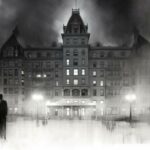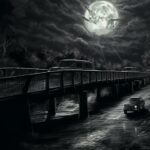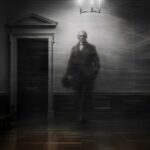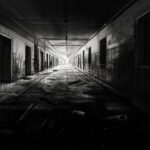Table of Contents
Amid the evergreen beauty and bustling urban landscapes of Seattle, Washington, lie tales of the supernatural that beckon the bravely curious. Seattle’s haunted history casts a spectral spell, with ghostly inhabitants claimed to roam its historic buildings and shadowy alleyways. Venture into the heart of the Pacific Northwest’s misty metropolis to explore these haunted places, where the past lingers and eerie stories await the daring.
If you are doing any kind of paranormal investigation here, you might want to take a look at our ghost hunting equipment list. Locations like this get a reputation because they are high activity and you don’t need much to see for yourself.
Pike Place Market
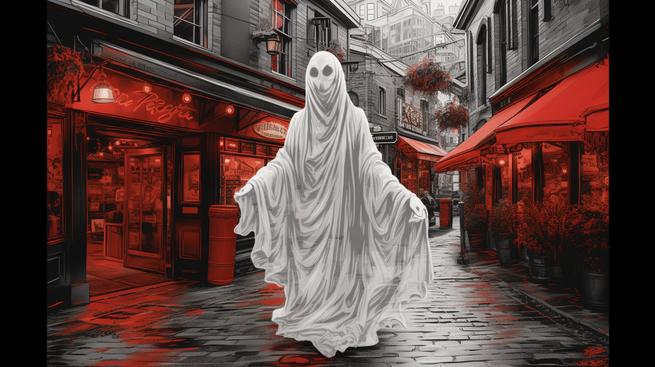
Pike Place Market, nestled in the heart of Seattle, Washington, carries with it a tapestry of tales as colorful as the produce that adorns its stalls. Known for its vibrant atmosphere and bustling crowds, the market also harbors a haunted history that whispers through its cobblestone streets and echoes in its lower levels.
Since its inception in 1907, Pike Place Market has been a melting pot of merchants, farmers, and artisans. But it’s not just the living that make up the market’s rich fabric—spirits of the past seem to cling to the nooks and crannies of this historic locale.
One of the most well-known ghostly residents is that of Princess Angeline, the daughter of Chief Seattle. She is oftentimes seen by the market’s visitors, her apparition peering out from the shadows, donning a red handkerchief and a shawl. Many believe she represents the market’s enduring legacy, watching over the vendors and patrons alike.
Another spectral figure believed to roam the corridors is that of Frank Goodwin, one of the market’s original developers. His spirit is said to be quite particular, with reports of him rearranging merchandise and keeping an eye on things, ensuring his beloved market runs just as efficiently as it did in his time.
The market’s lower levels, often referred to as the “down under,” offer a veritable rabbit’s hole of mystery. Shopkeepers tell tales of strange occurrences, from sudden cold drafts and disembodied footsteps to the uncanny sensation of being watched. It’s here that the market’s history feels almost tangible, as if the past could reach out and touch the present.
While some visitors come in search of the perfect bouquet of flowers or the freshest catch of the day, others come hoping for a glimpse into the otherworldly. Whether or not one believes in the ghost stories, it’s clear that Pike Place Market is much more than just a hub of commerce—it’s a place where Seattle’s history lives and breathes, and sometimes, if you listen closely, it might just whisper back.
I was just chilling at Pike Place Market when I swear I saw Princess Angeline’s ghost, all decked out in her red handkerchief, just looking over the crowd like she’s still keeping an eye on the place. It was super spooky but also kinda cool to think she’s part of the market’s old stories.
Harvard Exit Theatre
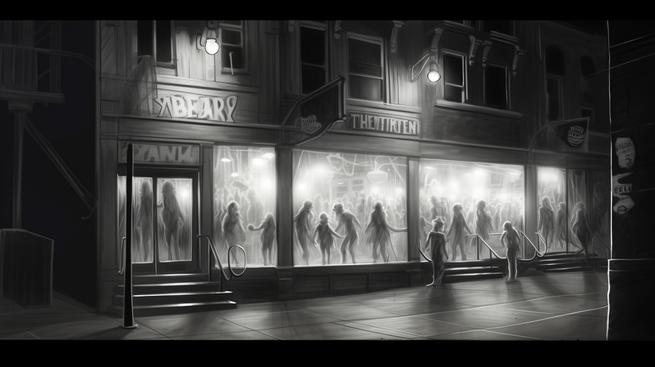
The Harvard Exit Theatre in Seattle, Washington, carries a storied past, shrouded in spectral whispers and eerie occurrences. As a beacon for thespians and movie enthusiasts alike, the building has long been a hub of culture and entertainment. Yet, it is the echoes of the departed that lend the Harvard Exit its notoriety in the realm of the paranormal.
The building, originally a meeting space for the Woman’s Century Club before it transformed into a beloved cinema, stands as a testament to history. Its walls, if they could talk, would recount tales of ghostly male bonding and spectral assistance. Witnesses have reported unexpected encounters with friendly spirits, who seem to cling to their favorite haunt, unwilling to take their final bow.
Renovations peeled back the layers of time, revealing hidden features that had been shrouded for years. The discovery of sixty windows behind the walls was akin to unmasking the hidden eyes of the building, now free to reveal the secrets they’ve kept in the dark.
Among the spirits said to linger is that of a woman, her presence a chilling reminder of a tragic past marred by murder and suicide. It is her unrest, perhaps, that fuels the paranormal activity, turning the theatre into more than just a venue for films and performances but a stage for the afterlife’s unresolved dramas.
The theatre’s transformation into the Seattle Consulate of Mexico brought modernity face-to-face with antiquity, yet the spectral inhabitants seem to have embraced the change, continuing to make their presence known. From the loft, now repurposed as offices, to the stage turned conference room, employees and visitors alike have felt the touch of the unseen and heard the whispers of the past.
The Harvard Exit Theatre stands as a cultural landmark, its history steeped in both artistic pursuit and otherworldly mystery. It serves as a reminder that some characters, long after the curtain falls, prefer an eternal encore to a final goodbye.
I was chilling at the Harvard Exit Theatre one night when I swear I felt a tap on my shoulder, but when I spun around, there was no one there – gave me the heebie-jeebies! People say the place is haunted, and after that, I totally believe them.
The Seattle Underground
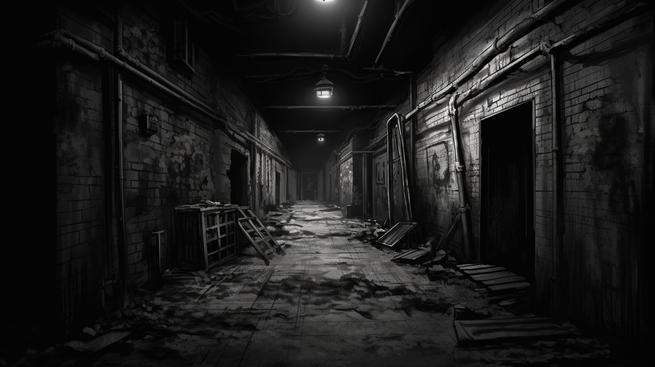
In the heart of Seattle, Washington lies a shadowy lattice of forgotten passageways known as the Seattle Underground. These subterranean corridors are a relic of the city’s tumultuous past, whispering tales of old haunts and restless spirits. Following the catastrophic Great Seattle Fire of 1889, which reduced much of downtown to ashes and racked up damages equivalent to half a billion dollars in today’s currency, city officials opted to raise the streets by approximately 12 feet. This bold move was a bid to combat the chronic flooding and to rebuild the city from its own ashes.
The elevation of the streets left behind an intricate network of abandoned tunnels, where once-thriving businesses were buried beneath the new cityscape. As merchants and customers embraced their elevated storefronts, the underground spaces fell into disrepute, becoming a hotbed for society’s vices—gamblers rolled the dice, sex workers plied their trade, and drug users sought refuge in the shadows.
Today, the Seattle Underground is a ghost town in the most literal sense. While the living have mostly turned their backs on these hidden passages, there are those who never checked out. The tunnels are rife with tales of spectral sightings and eerie encounters, particularly within the remnants of the old bank and the infamous Oriental Hotel brothel.
Among the cast of phantom characters, one spirit takes center stage: Edward the bank teller, a victim of a fatal shootout, is said to be the most frequently encountered apparition. His spectral presence serves as a stark reminder of the lawless days when the underground was Seattle’s underbelly.
As these ghostly tales continue to capture the imagination, the Seattle Underground stands as a monument to the city’s checkered past—a place where the echoes of yesteryear are forever etched into the fabric of the present. Whether visited by the curious or the brave, these haunts remain a spine-tingling piece of Seattle’s history, where every shadow holds a story and every whisper a secret of the past.
One night, I dared to venture into the Seattle Underground, and there, in the dim light, I saw the ghostly figure of a man in old-timey clothes just staring, before he vanished into thin air. They say he’s the restless spirit of a gambler who lost everything down there, still pacing the tunnels, waiting for a second chance that’ll never come.
The Sorrento Hotel
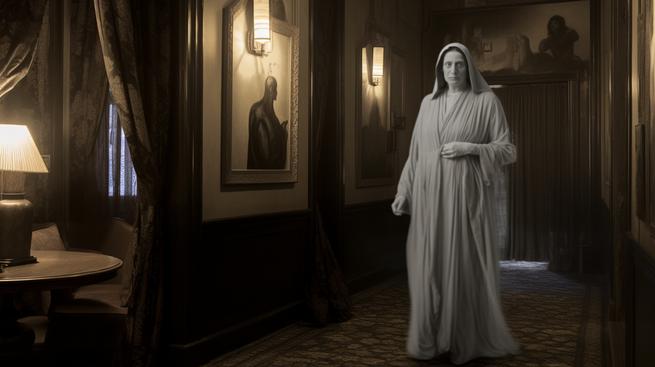
Nestled near Seattle’s First Hill neighborhood, the Sorrento Hotel, also affectionately dubbed the Italian Oasis, throws open its doors to a world where the past and the supernatural intertwine. Since its grand opening in 1909, just ahead of the city’s bustling Alaska-Yukon Exposition, the hotel’s striking Italian-style architecture has been a head-turner, for reasons both elegant and eerie.
Developed by Seattle clothier Samuel Rosenberg, the Sorrento quickly became a jewel in the city’s crown, despite its early financial hiccups. In a twist of fate, Rosenberg traded the hotel for a 240-acre orchard in Rogue River Valley in 1910, following a series of financial losses. Yet, it’s not the business deals or the Italianate design that keep the Sorrento Hotel in hushed conversations—it’s the ghostly guest who refuses to check out.
The hotel’s most infamous spectral resident is none other than Alice B. Toklas, the literary muse and lifelong companion of writer Gertrude Stein. Toklas’s afterlife connection to the Sorrento Hotel is a puzzle wrapped in a mystery; she never stayed there in her living years. However, rumors swirl like mist through the hotel’s halls that Toklas’s spirit took up residence in the afterlife, perhaps drawn by the hotel’s old-world charm or an unfinished symphony of her own.
Guests and staff have reported chilling encounters with Toklas’s apparition, particularly in and around Room 408. From phantom footsteps to sudden temperature drops, and the unshakable feeling of being watched, the ghostly goings-on are enough to make even the bravest souls think twice. Toklas’s shade is most often sensed through the smell of her favored lavender, a scent that wafts through the corridors without warning, her signature from beyond the grave.
The Sorrento Hotel embraces its haunted heritage, and the whispers of its eternal inhabitant add a layer of intrigue to every creaking floorboard and flickering light. It’s a place where history is alive—and in some cases, it seems, livelier than one might expect. Whether a trick of the light or a truth stranger than fiction, the Sorrento Hotel remains Seattle’s most beloved haunt, where the veil between worlds is as thin as the morning fog that blankets the Emerald City.
I heard that Alice B. Toklas, you know, the famous writer’s pal, haunts the Sorrento Hotel, wandering the halls and spooking guests who swear they’ve felt her ghostly presence. It’s like she never really left the place since the 1900s, and now she’s just part of the hotel’s quirky charm.
The Moore Theatre
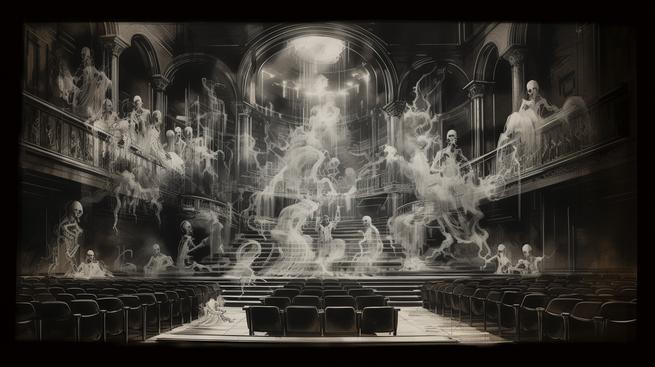
The Moore Theatre, standing tall at 1932 2nd Avenue, anchors itself in Seattle’s cultural and spectral history. Built by a Canadian entrepreneur and managed by a New Yorker, this entertainment cornerstone claims the title of Seattle’s oldest performing arts venue. Its walls, steeped in history, harbor more than just memories; they serve as a haven for the city’s most storied phantoms.
Beneath its grand facade, the Moore Theatre conceals a spine-chilling foundation—it sits atop Seattle’s oldest cemetery, giving “eternal rest” a whole new meaning for theatergoers. The venue’s past is as colorful as it is eerie; it once set the stage for a séance, attempting to pull back the curtain between the living and the dead.
The theater’s fabric holds more than just echoes of applause, with some upholstery rumored to be so entrenched in cigar smoke that it seems to exhale the essence of long-gone patrons. Moreover, the Moore Theatre is shrouded in tragic rock lore, whispered to be the actual site of Nirvana frontman Kurt Cobain’s fatal overdose.
The basement of the Moore Theatre is particularly alive with supernatural activity, a hotspot for Electronic Voice Phenomena that sends shivers down the spines of the most skeptical visitors. It’s no surprise that the Atlantic Paranormal Society (TAPS) turned their ghost-hunting gadgets towards this locale for an episode of Ghost Hunters.
The spectral cast of the Moore Theatre features none other than James Moore, the original developer, whose apparition is often seen keeping a watchful eye over his namesake establishment. The stage seems to never have bid adieu to early luminaries like Sarah Bernhardt, Marie Dressler, and members of the Barrymore clan, who reportedly take their eternal encores in the aisles and wings.
Visitors and staff have reported encounters with the inexplicable—the feeling of being followed by heavy breathing and footsteps, or the sudden weight of unseen presences. These occurrences turn the theater into a house of whispers and shadows, where the line between the present and the past blurs.
Whether seeking a brush with the arts or the afterlife, the Moore Theatre promises an experience that transcends the ordinary, where every performance might just include an unlisted cast from the beyond.
I heard that the Moore Theatre is super old and sits right on top of an ancient cemetery, so when you’re watching a show, you might be chilling with some real ghosts! People say that some of those seats still smell like cigar smoke from audience members who’ve been gone for ages.
The Oxford Saloon
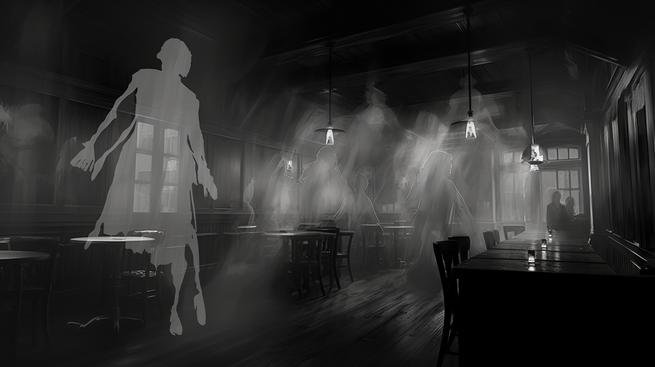
Nestled in the heart of historic Snohomish, the Oxford Saloon stands as a testament to the past, its walls echoing with tales from a bygone era. Erected in 1900, this establishment originally served the community as Blackman’s Dry Goods store before transforming into a saloon a decade later. Through the ebb and flow of time, the name “Oxford” has remained a constant, a nod to the saloon’s enduring presence.
Upon its conversion into a saloon, the proprietors added a vestibule that opened to a staircase ascending to the second floor. Although purported to be a boarding house, whispers circulated about a high-class bordello, run by a local businesswoman known as Kathleen—or Katherine to some. She maintained her operations from the Eagle’s Lodge, discreetly orchestrating rendezvous for the elite.
The Oxford Saloon’s history is not without its dark chapters. The establishment was often a hotbed for violence, with the basement, the men’s card room, and the bar being frequent stages for brawls and bloodshed. Among these tales of turmoil, the story of a policeman named Henry stands out. Henry, a regular patron known to moonlight as a bouncer, met his tragic end while intervening in a fight. A knife’s blade snuffed out his life, but his spirit refused to vacate the premises.
Today, Henry’s ghostly presence is an open secret, with frequent sightings near the stairs to the basement. It’s said he has found a peculiar fondness for his spectral existence, watching over the Oxford with an invisible yet vigilant gaze.
The Oxford Saloon, with its haunted history, continues to be a jewel of Snohomish, inviting both the living and the dead to its timeless embrace. Whether it’s the allure of its storied past or the chill of an unseen presence, this saloon remains a cornerstone of the community, its legacy as immortal as the spirits that are rumored to reside within its walls.
I heard folks say the Oxford Saloon is haunted, like there’s this ghost of a policeman who got stabbed there long ago, and he still hangs around looking for his killer. Gives me the chills just thinking about it!
Kells Irish Pub
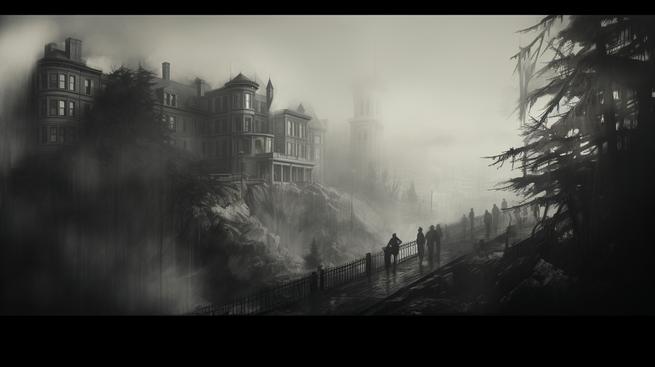
Kells Irish Restaurant & Pub stands as a vibrant hub for social gatherings in Seattle, Washington, but its walls echo with a history much darker than its lively atmosphere suggests. Nestled within the historic Butterworth Building at 1921 First Ave, just a stone’s throw from Pike Place Market, Kells Irish Pub serves patrons both food and frights, as it is widely known for its haunted reputation.
The Butterworth Building, where Kells currently pours pints and dishes out meals, was originally the home of Butterworth & Sons mortuary. Established in 1903, it holds the chilling distinction of being Seattle’s first permanent mortuary. The building’s entrance, now welcoming guests with the promise of Irish hospitality, was once the grim portal through which countless cadavers were delivered.
The Butterworth Building’s ingenious design capitalizes on its location atop a steep hill, exhibiting three stories on one side while revealing five on the other. Since 2005, the McAlessee family has held the reins, embracing the building’s eerie past and the stories that lurk within its walls.
Legends tell of spirits that never left, souls tethered to the former mortuary, perhaps due to unfinished business or the sheer number of deaths that passed through its doors. Patrons and staff at Kells Irish Pub often report supernatural encounters, from ghostly apparitions to inexplicable sounds and movements. These tales are not mere whispers in the dark; they form the backbone of the pub’s haunted legacy.
Kells Irish Pub is not just a watering hole; it’s a place where the veil between the living and the dead seems as thin as the wafer on a communion tongue. The spirits of the past are the invisible patrons of the present, and the echoes of their existence serve as a constant reminder that in this pub, one might just find themselves rubbing elbows with history—or the otherworldly.
Visitors seeking both libations and legends flock to Kells, where the past is always present, and every clink of a glass might just be accompanied by the rustle of a bygone era or the chill of an unseen presence. In the heart of Seattle, Kells Irish Pub stands as a testament to the city’s history, a place where spirits—both the liquid kind and the spectral—intermingle under the roof of a building that has seen more than its fair share of life and death.
I was sipping my beer at Kells when a chill ran down my spine; they say it’s the spirits of the old mortuary, still hanging around, giving folks a proper scare.
The Merchant’s Cafe And Saloon
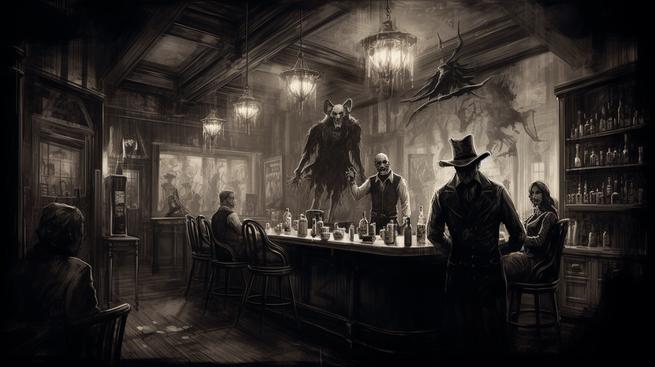
In the heart of Seattle’s Pioneer Square, The Merchant’s Cafe and Saloon stands as a testament to the city’s rich and spirited past. Established in 1890, this venerable establishment wears the crown as one of the city’s oldest bars, and with that long history comes a tapestry of tales that send shivers down the spine.
The Merchant’s is more than just a place to wet one’s whistle; it’s a watering hole where the past and present collide, with patrons often reporting encounters of the ghostly kind. The bar’s storied history is said to be alive with the echoes of yesteryear, with spirits of the departed rumored to linger in its storied rooms.
Legend has it that the upper floors of The Merchant’s, once a hotel, are home to the most supernatural activity. Staff and visitors alike have whispered stories of ghostly apparitions, objects moving of their own accord, and mysterious sounds that float through the air like the remnants of a forgotten time. Whether it’s the ghost of a former bartender still manning his post or a spectral lady in white who descends the stairs with an air of eternal grace, the ethereal residents are as much a part of the establishment as the antique bar that anchors the room.
Skeptics may dismiss these tales as nothing more than fancy, but for those who’ve felt an unexplained chill or caught a glimpse of something just out of the corner of their eye, The Merchant’s is a place where the veil between worlds seems thin indeed. It’s a hub where history has a heartbeat, and the line between the living and the dead blurs in the flicker of candlelight.
So, if you find yourself with a thirst for adventure and a pint in Seattle’s old town, The Merchant’s Cafe and Saloon might just offer you a brush with the otherworldly. Just remember, when you raise your glass in this haunt of history, you may be sharing a toast with more than just your friends.
I was sipping my beer when I felt a sudden chill, and out of the corner of my eye, I swear I saw a shadowy figure glide through the wall upstairs at The Merchant’s. They say it’s haunted, and man, after that, I totally believe it.
The Butterworth Building
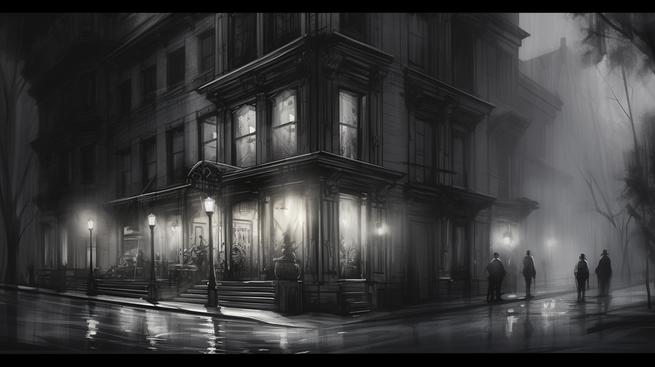
The Butterworth Building in Seattle, Washington, holds a chilling legacy as a hub for the supernatural. With its roots as the nation’s inaugural mortuary, this structure has become a whispering ground for tales of the otherworldly. Now housing Kells Irish Restaurant, the building’s eerie past continues to serve up more than just pints and pub fare.
Established in 1903, the Butterworth Building set a precedent as the first dedicated mortuary in the United States. Death became a business here, with the Butterworth mortuary offering a full range of post-life services, from coffins to mourning spaces. The entrance to the building, which now welcomes patrons looking for a bite to eat, was once the somber threshold where the deceased were carried into the care of morticians.
The Butterworth mortuary was known for its compassionate policies, notably the allowance for families to stay with their loved ones before they were laid to rest. This practice is believed to have imbued the building with an air of solace, a trait that some speculate attracts restless spirits seeking peace.
Over the years, the Butterworth Building has become an iconic landmark in Seattle’s haunted history. Patrons and employees of Kells Irish Restaurant have reported unexplained phenomena—glasses shattering, ghostly apparitions, and eerie whispers that send shivers down the spine. These occurrences have led many to conclude that the pub is a hotspot for paranormal activity.
Seattle’s dark and storied past serves as the perfect backdrop for the Butterworth Building’s ghostly reputation. As the old saying goes, “If walls could talk,” the tales from this former mortuary would fill volumes with stories from beyond the grave. Today, the building stands as a testament to Seattle’s spectral heritage, a cornerstone in the city’s ghostly narratives, and a must-visit for those eager to sip a pint with the past.
I heard that the old Butterworth Building, where Kells serves up its brews and grub, is haunted by the ghosts of its mortuary past, with folks claiming to catch glimpses of shadowy figures and hear eerie whispers while they’re sipping their pints.
The Cadillac Hotel
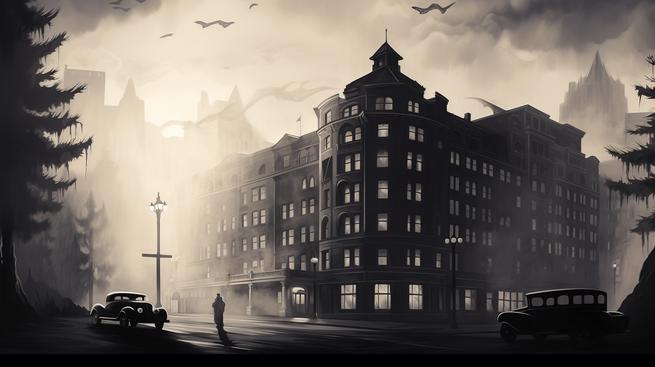
The Cadillac Hotel in Seattle, Washington, stands as a storied sentinel of the city’s past, its walls echoing with the whispers of yesteryear. Erected in the wake of the Great Fire of 1889, the hotel emerged from the ashes as one of the first edifices to redefine the city’s skyline. Designed by James W. Hetherington and Clements, the building became an integral part of the Wittler Block, a cornerstone of Seattle’s original commercial district.
Opening its doors as the Elliott House in 1890, the hotel quickly became a beacon for those seeking refuge or a fresh start. By 1891, it transformed into the Derig Hotel, offering fifty-six rooms that bore witness to a revolving door of guests, some with checkered pasts and dubious intentions.
Over the decades, the Cadillac Hotel has seen its fair share of temporary tenants, but not all checked out as expected. The hotel’s history is punctuated by tales of the paranormal, with guests and staff reporting eerie encounters that send shivers down the spine. The upper section, now silent and sealed due to stringent fire regulations, seems to harbor the essence of those who once roamed its hallways.
Visitors to the hotel have reported a range of spine-tingling experiences, from unexplained noises to sudden drops in temperature. Some have even caught glimpses of apparitions, vestiges of former inhabitants that refuse to fade into obscurity. The Cadillac Hotel, a name that has become synonymous with supernatural phenomena, continues to pique the curiosity of both skeptics and believers.
The hotel’s haunted reputation has turned it into a must-visit destination for those looking to peer beyond the veil. Each creaking floorboard and flickering light is a testament to the building’s phantasmal legacy, a legacy that stands as a ghostly garrison against the march of time. Whether it’s the allure of history or the thrill of the unknown, the Cadillac Hotel remains an indelible part of Seattle’s haunted landscape.
One night, while walking down the hall, I felt a sudden chill and saw the shadowy figure of a man in old-timey clothes just vanish into thin air. It totally freaked me out!
The Panama Hotel
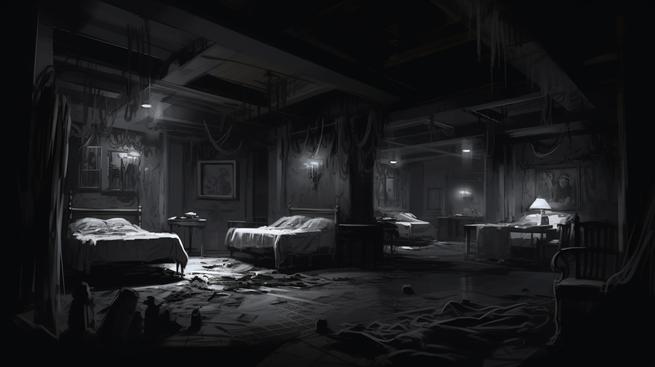
The Panama Hotel in Seattle, Washington, is a veritable treasure trove of history, with a past that sends shivers down the spine of many a guest. Erected in 1910 by Sabro Ozasa, a Japanese architect, it served as a hub for the Japanese American community in Seattle before and during World War II.
The hotel’s haunted reputation stems from its poignant connection to a dark chapter in American history—the internment of Japanese Americans during the war. When the order came to evacuate their homes and businesses, many residents of Seattle’s Japantown, known as Nihonmachi, turned to the Panama Hotel as a safe haven for their most precious belongings. They stowed away their suitcases, family heirlooms, and treasured items in the basement, hoping to return for them once the turmoil had settled. Sadly, many never had the chance to reclaim their possessions, as they were either relocated indefinitely or did not survive the internment camps.
Today, the Panama Hotel stands as a ghostly guardian of these lost stories, with the basement still housing the unclaimed belongings, a time capsule of the lives interrupted. Visitors and staff alike report eerie encounters, with whispers in the hallways, shadowy figures, and a general sense of being watched, as if the spirits of the past linger, yearning for closure.
The establishment, now more than a century old, also boasts antique furnishings and vintage charm that seem to echo the lives that once filled its rooms. The shared bathrooms, antique vanities, and wool blankets provide an authentic experience that transports guests back in time, if only for a night. The hotel’s ability to maintain its historical integrity while providing comfort and affordability makes it a rare gem, one that offers more than just a place to lay one’s head but also a journey through history.
Whether visitors come seeking the thrill of a haunted hideaway or simply a cozy corner in the heart of downtown Seattle, the Panama Hotel continues to serve as a reminder of the past, its walls a mosaic of untold stories, its ambience a whisper of bygone days.
I stayed at the Panama Hotel and couldn’t shake the feeling of being watched, especially after hearing about all the stuff left behind in the basement from folks who never came back. It’s like the whole place is whispering old stories and secrets.
The Canlis Restaurant
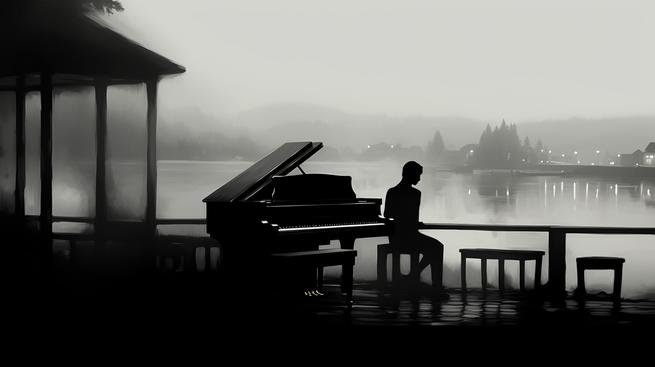
The Canlis Restaurant in Seattle, Washington, carries a reputation that extends beyond its exquisite dining experience. Perched on a hillside overlooking Lake Union, this culinary institution is said to harbor echoes of the past, with a haunted history that adds a pinch of the paranormal to its menu of mystique.
The story goes that during the 1950s, the Canlis family hired a young pianist to serenade diners with the ivory keys of a grand piano. This musician, whose name has been lost in the whispers of time, was reportedly as talented as he was troubled. He fell deeply in love with a waitress working at the restaurant, but his affections were not reciprocated. Despair engulfed him, and it is believed that his sorrowful spirit never left the establishment, even after his untimely death.
Guests and staff have reported eerie occurrences that send shivers down their spines. Some speak of piano music drifting through the air when no one is seated at the instrument. Others tell tales of chilling breezes that sweep through closed rooms, carrying the faint scent of a melancholy melody. The most spine-tingling of these accounts include sightings of a spectral figure, a gentleman in evening attire, lingering near the piano, his ethereal fingers dancing over silent keys.
The Canlis family, custodians of this gastronomic gem, have embraced the haunted whispers as part of the restaurant’s lore. They often play host to the curious and the brave, serving up a side of spine-tingling stories with their award-winning dishes. The legend of the lovelorn pianist has become as much a part of Canlis as the wood-paneled walls and panoramic windows that frame the Seattle skyline.
In the heart of the restaurant, the grand piano stands as a testament to the tales of old, a synecdoche for the unending waltz between the living and the spectral. It beckons the adventurous to partake in an experience that’s both a feast for the stomach and a dance with the whispers of the past.
So, while Canlis continues to set the bar high for fine dining, the ghostly rumors remain a part of its allure, making it a place where patrons can not only tantalize their taste buds but also flirt with the supernatural, leaving them with a story to tell that’s as rich as the restaurant’s famous butter-poached steak.
I heard that back in the day, a lovesick piano guy at Canlis couldn’t get over a waitress and now his ghost hangs around, still playing tunes when no one’s even touching the piano. Gives me the creeps every time I hear about it.





